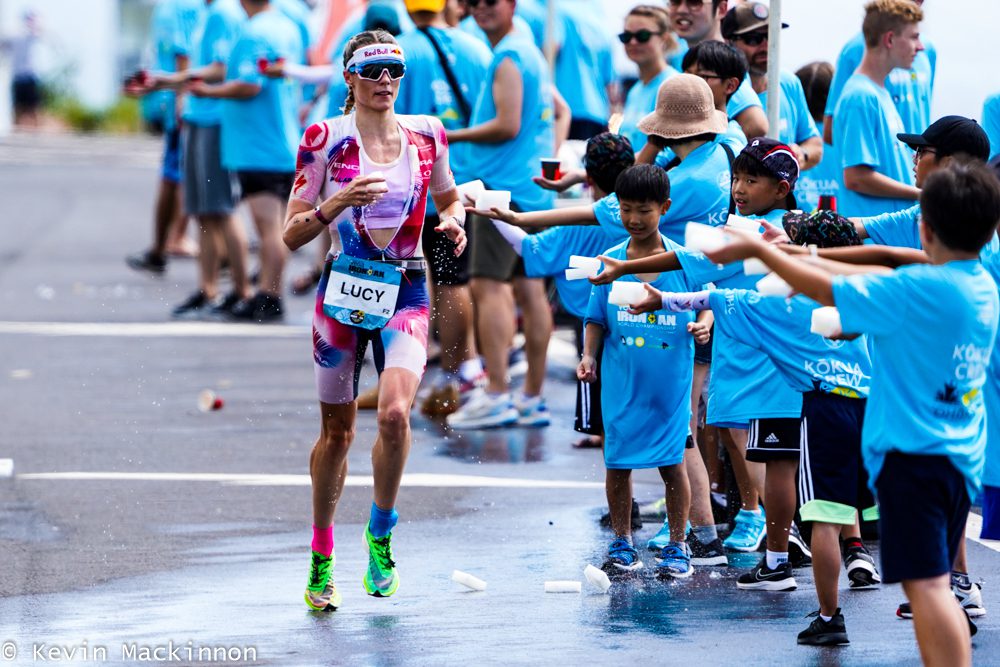What you can expect at Ironman and World Triathlon events in the future
Last week both World Triathlon and Ironman outlined what we can expect in the "new normality" brought on by the coronavirus COVID-19 pandemic.

Last week Ironman CEO Andrew Messick outlined some of the changes we’re likely to see at events once they get started again, while World Triathlon released a “World Triathlon COVID-19 prevention guidelines for Event Organisers document.”

While its still very uncertain as to when we’ll see racing resume around the world, both Ironman and World Triathlon are preparing for a day when we’ll be able to compete once again.
“To the extent that we’re allowed to have races, we’ll be working closely with the relevant health authorities in order to craft an event program that is going to be acceptable to different countries,” Ironman CEO Andrew Messick said in a press briefing last week. “I think our belief is that different countries are going approach these different problems in different ways and I think we’re going to have a true north of what constitutes post-COVID racing.”
Messick envisions that our new race reality, when it comes to Ironman events, will revolve around five broad principles:
- Training, teaching and education of athletes, volunteers and everyone who is at events
- Minimization of touch points: How do we create a race experience that will allow people fewer proximate and physical contacts with other people.
- It will require us to be really thoughtful about density and minimizing density. Whether that is in corrals, in swims, in changing tents in finish lines, we’re going to have to do more about being thoughtful around density.
- It is going to involve some element around screening, and being thoughtful and proactive in ensuring that people know what symptoms to look for and that people aren’t doing anything that’s inconsistent with guidelines that we’re all going to be living under.
- Athlete self reliance: Every athlete is going to have a huge amount of control over how proximate they are with other people during the course of an event. You can choose to go to expo. You can choose to go to the merchandise tent. You can choose to take liquids and calories from volunteers. Or, in all those cases, you can choose not to. Part of what we’ve learned from other parts of the business that we’re in – the trail running space, for instance – it’s very unusual for people in the trail running world to race without a personal hydration vest. You carry the water on your back. It’s uncommon in triathlon, it’s uncommon in road races, but for athletes who don’t want to interact with other people, it is a way in which people can choose their own level of interaction with others. A lot of interactions people have with others at races are at aid stations. The extent that people want that, we will find ways to make that available with less contact. To the extent that people don’t want that, we’ll find ways for people to be self reliant.
On Thursday World Triathlon released a comprehensive document with recommendations on how events should be organized as we get back to racing.
“I am absolutely proud of the excellent work done by the World Triathlon team on putting in place this comprehensive Guide, which will help organizers all across the world to plan for their events in the near future,” said World Triathlon President and IOC member, Marisol Casado. “Obviously we will all be impacted by this crisis, and our events will look different from now on, but everyone should understand that all these measures are to protect the health and safety of everyone involved in our events, from athletes to spectators, coaches and officials.”
Similar to Messick’s points, the recommendations include health monitoring at events for athletes, coaches and everyone else involved at the race. Masks and gloves are recommended for all non-competition activities. Social distancing will be incorporated into every aspect of the events from the start of the swim to the finish and award ceremonies after the races. Only non-drafting events are recommended for age group competitors.
Of course all this is dependent on what health authorities will permit in their regions. Messick anticipates that when we do see racing starting up, it’s very likely to be “local” to various countries as international travel might be prohibited.
“While the advice given in these guidelines has been developed using the best information available, it is intended purely as guidance, and its application will depend on the current local authorities restrictions in place in the town/city where the event will take place,” the ITU said in a press release last week.
